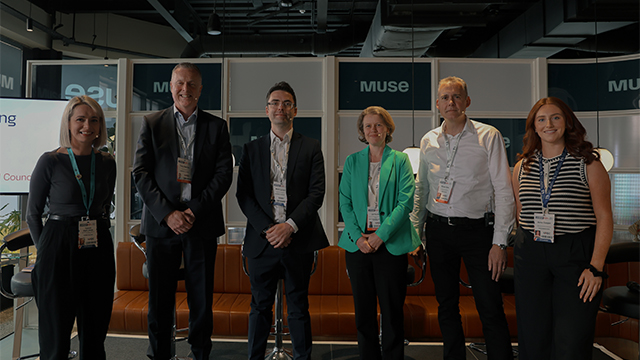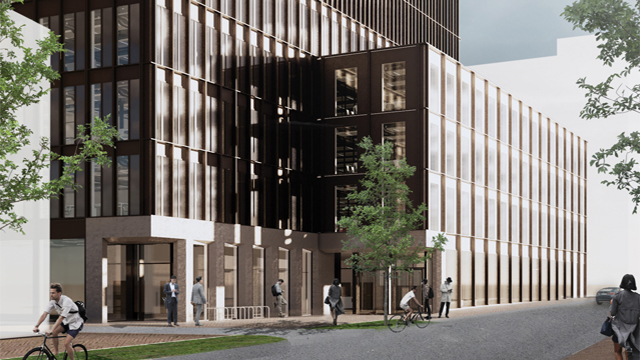COMMENT Life sciences are booming. Medicinal and pharmaceutical products are now the UK’s third most exported goods and, according to PwC, life sciences contributed £43bn in GVA to the UK economy in recent years, with pharmaceutical manufacturing making up almost half of that. No wonder life sciences is one of the eight priority sectors in the government’s draft industrial strategy.
One of the reasons for this is that life sciences never stands still. It is embracing machine learning, automation, genomics and, of course, AI – and being at the forefront of these technologies will ensure the UK maintains its competitive edge in the wider global market.
Inevitably the facilities built to support this work need to be at the cutting edge too. What does that mean for life sciences facilities themselves, and for the design and decisions made when we think about how we must build them?
In the dark
One answer is that we will see more “dark labs”. This sounds ominous but a dark laboratory is simply a life sciences facility that is near fully automated. Dark labs appeal to leading occupiers because they can reduce the time it takes to get products to market, boost innovation and discovery and optimise the way resources are used.
But delivering dark labs requires a deep understanding of the latest market trends and careful project management. Lab accommodation is among the most expensive in the world. The rental premium for life sciences in the UK can be up to 75% higher than for traditional commercial space. However, dark labs tend to need less – and a different kind of – space in which to operate.
There is increasing interest in converting existing commercial offices into research space and this could be even easier with a dark lab: firms could choose a basement area, or a space with lower headroom and less natural light, elements which would otherwise concern a workforce.
Efficiency gains are another dark lab “plus”. Scientists generally don’t want to work all hours, while automated technology can operate 24/7, albeit with some human oversight. While some human involvement is inevitable, automated and technology-enabled processes in dark labs can aid continuity and lead to better research outcomes, making these facilities attractive to occupiers.
Thanks to the use of AI and automation, margins for error in dark labs are low. Scientific research is often like looking for a needle in the haystack; a test needs to be repeated many times and in the right conditions to gain the necessary insight needed to make a breakthrough. The research improvements offered by dark labs can help offset the costs of construction or retrofit.
Due to their specific requirements, which are determined by machines rather than human occupiers, dark labs are also more easily built using modular construction. This can help speed up construction timelines and avoid delays working with multiple teams and suppliers.
While space constraints are a common challenge in traditional laboratory settings, particularly due to the requirement for a minimum floor-to-ceiling height, in the absence of human occupancy, such height restrictions are no longer necessary, making a wider range of existing real estate suitable for dark labs. By reducing the overall headspace requirement, these facilities can be accommodated in spaces that would otherwise be impractical for conventional laboratories.
Watertight security
As with any proposed life sciences project, there will inevitably be challenges to the dark lab model. These include the flow and storage of data, access to suitable energy supplies and the scheme’s environmental specifications.
Benchmarking also plays a critical role in the planning and development of dark labs, as traditional cost estimation methods, such as the Lang Factor formula, may not accurately reflect their unique spatial and operational efficiencies. By leveraging benchmarking data, it is possible to achieve a far more precise understanding of budget and scheduling requirements. This data-driven approach enhances predictability and strengthens the business case for dark lab projects, ensuring informed decision-making and optimised resource allocation.
Mechanical and electrical is a major cost driver on any life sciences development, and to accommodate an increased number of machines, dark labs also have greater cooling requirements.
Similarly, access to power is an important consideration. To meet the needs of high-tech occupiers, dark labs need a power capacity high enough to allow for cloud-based collaboration and space must be allocated for backup power systems.
Given the amount of data generated, digital security must be completely watertight. In multi-tenanted buildings, there may also be a need to separate tenants’ physical and digital access to some services, to guarantee intellectual property is preserved.
The government recognises the contribution life sciences make to the country’s economy and the wellbeing of its citizens and the opportunities to develop this sector are there for the taking. Dark labs have an important role to play a part in this drive for success. Whatever type of project is being considered, understanding the importance of advanced cost, schedule and programme management is fundamental to delivering successful facilities.
Andy McLoughlin is project director at Linesight











